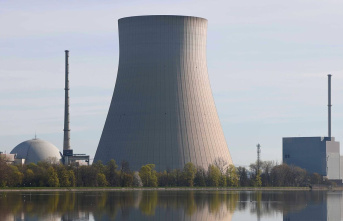Peter Ertl trudges across the sodden meadow in high rubber boots. At the edge of a small pond, he kneels down and uses his hand to bend the long blades of grass aside. "Here's otter droppings," he says, pointing to some droppings. Ertl examines the thicket at the edge of the bank. At one point it is pushed to the sides in such a way that a tube is formed down to the water. This is also typical for otters.
Ertl is one of four otter advisors at the State Institute for Agriculture (LfL) in Bavaria. Pond keepers call him when they suspect that the protected wild animal is catching prey in their ponds. Ertl then searches for typical traces, advises the companies and helps with applications for compensation, which the state of Bavaria has been paying to affected companies since 2016.
On this autumn day he is visiting the Bollinger family in Upper Palatinate. Your farm is idyllically situated between gentle hills on the edge of the forest. Dairy cows graze on the lush green meadow between carp ponds. Two ducks fly away, cackling loudly, as Ertl, Anita Bollinger and her father Michael approach the ponds.
The otters are only slowly returning
The pond owners have long suspected that the otter also feels at home here: the yields have fallen continuously in recent years, says Anita Bollinger. "As long as the damage is limited, you tolerate it," adds Michael Bollinger. But now the loss is up to 50 percent. Therefore, the company wants to apply for compensation.
The otter was long extinct in large parts of Germany. It has been spreading again for some time, but is still considered endangered. "In principle, this is a trend that comes from the East," explains biologist Reinhard Klenke from the Helmholtz Center for Environmental Research in Leipzig. In western federal states such as Baden-Württemberg, Hesse and North Rhine-Westphalia, the otter is still rarely found. In the east of Saxony and on the eastern border of Bavaria, on the other hand, it is widespread. "This can lead to problems locally," says Klenke.
With the Bollinger family, for example, but also with other pond owners. "The claims are increasing," says Ertl. According to the LfL, more than one million euros were paid to affected companies last year alone. However, the compensation only covers up to 80 percent of the losses. "Pond farming is manual labor," says Ertl. For many of the small businesses, this is no longer worthwhile in view of the damage. "But if the ponds disappear, biotopes will also be lost."
Only fences really help
Scaring away the otter with noise or smells - that has already been tried, says LfL expert Christian Wagner. But it didn't work. "The only thing that really helps is building the fence." But a fence around the fish pond is not possible everywhere.
This is confirmed by Andreas Stummer from the Saxon State Fishing Association. In Saxony, where the carp ponds are generally larger than in Bavaria, this is only a viable solution in individual cases, he says. The cormorant is still causing the greatest damage in Saxon fish ponds. "But the number of otters has increased rapidly in recent years," says Stummer. He is convinced that it must therefore be possible to shoot the predator in managed pond areas.
A court dispute is already raging in Bavaria. In 2020, the government of the Upper Palatinate issued special permits for “removing a maximum of two male otters each” for three pond systems that were particularly affected, as the authorities put it. On the other hand, the Bund Naturschutz (BN) is suing. A decision by the Bavarian Administrative Court is expected in the coming year.
A killed animal can quickly be followed by the next
Even if there are initially a maximum of six otters in the Upper Palatinate: Each individual animal ultimately influences the spread, says BN expert Christine Margraf. "Otters are territorial animals. When a territory is occupied, the young move on," she says. But if an otter is shot down, there is no reason for the young animals to settle elsewhere.
Klenke is also critical of the killing of individual otters. There are now better data on the distribution and also random studies on the population density, but these are not sufficient. You need a population model to see what the consequences of removing individual animals are and what effect they might have, he says. "Otters are highly mobile. If there are otters around, a territory that becomes free will be occupied again within a short time."
For this reason, Margraf fears that a kind of precedent for all of Germany could be set in the Upper Palatinate. "If it's going to work, you'd have to shoot the otter across the board," she says. However, the otter is not solely responsible for the economic problems of the pond owners. The climate crisis is also causing this. Margraf is convinced: "Like the wolf, the otter is being made the scapegoat for misconduct in agricultural policy."












